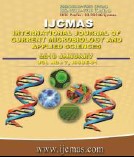


 National Academy of Agricultural Sciences (NAAS)
National Academy of Agricultural Sciences (NAAS)

|
PRINT ISSN : 2319-7692
Online ISSN : 2319-7706 Issues : 12 per year Publisher : Excellent Publishers Email : editorijcmas@gmail.com / submit@ijcmas.com Editor-in-chief: Dr.M.Prakash Index Copernicus ICV 2018: 95.39 NAAS RATING 2020: 5.38 |
Agroforestry constitute major chunk of share in replenishing atmosphere, sequestering carbon, and remediating contaminated soils. Phytoremediation is emerging as an alternative agriculture-based technology because word remediation of metal polluted sites can be brought about utilizing the plants to uptake and store contaminants in them. Conventional procedures for cleaning up heavy-metal‑contaminated sites (i.e. excavation, dredging, and chemical leaching) are all expensive and destructive for the natural environment. An alternative to these physical remediation methods is the use of plants to remove pollutants from soil and water through their root systems, an approach known as phytoremediation. Once extracted, plants may sequester the pollutants in their tissues and/or convert them to less toxic forms. Agroforestry systems are a better climate change mitigation alternatives than oceanic, and other terrestrial options because of the secondary environmental benefits such as helping to attain food security and secure land tenure in developing countries, increasing farm income, restoring and maintaining above-ground and below-ground biodiversity, corridors between protected forests, as CH4 sinks, soil conservation and. maintaining watershed hydrology.
 |
 |
 |
 |
 |